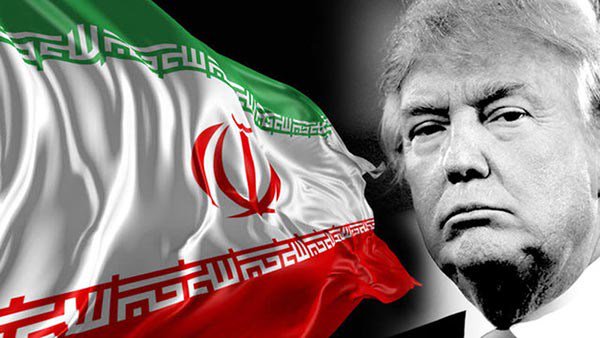Analysis/Mysterious Attack on Saudi Oil Tanker Heats Up U.S.-Iranian Front
عاموس هاريل من الهآررتس: الهجوم الغامض على ناقلة النفط السعودية يسخّن الجبهة الأميركية الإيرانية
Amos Harel/Haaretz/29 July/18
Washington fears Iranian-led attack on troops in Iraq ■ Israeli politicians say fight to stop Iran in Syria proved successful, but military remains skeptical.
An incident on Thursday that generated relatively little media coverage is attracting a great deal of attention among intelligence organizations in the region and from the oil industry. A huge tanker with a shipment of oil from Saudi Arabia bound for Egypt was damaged by a missile attack from the northern Bab el-Mandeb strait in the Red Sea. The Houthi rebels in Yemen, armed and financed by Iran, were responsible for the attack. It happened in the wake of the renewed exchange of threats between the United States and Iran, which could also hurt the oil market.
The tanker, the Arsan, was flying a Saudi flag and transporting some 2 million barrels of oil to Egypt. It was struck by missiles near the port of Hodeida in Yemen where Saudi Arabia and the United Arab Emirates have been attacking the Houthis for the past few months. According to the Washington Institute the tankers were hit by a rocket fired from a fast-attack vessel or a ground-to-sea missile fired from Yemen, possibly a C-802, which Iran supplies to the rebels. The Houthis claimed responsibility for the attack and the Saudis announced that they were suspending tanker shipments in the Red Sea until the situation was sorted out and marine traffic was safe again. The Washington Institute researchers wrote that the Red Sea is the third most important shipping lane in the word (the first is Hormuz in the Persian Gulf).
The incident happened in the midst of a typical Twitter duel between U.S. President Donald Trump and the Iranian leadership, during which the Iranians threatened to disrupt international oil shipments if the United States imposes sanctions that hurt the Iranian oil industry. The commander of the Revolutionary Guards Quds Force, Gen. Qasem Soleimani, has accused Saudi Arabia over the past few days of responsibility for the “unsafe” conditions in the Red Sea.
The United States is worried about Soleimani, who directly threated Trump last week, for other reasons as well. There is concern that the Revolutionary Guards might deploy Shi’ite militias, armed and financed by Tehran, to strike U.S. troops in Iraq. In the beginning of this decade, the United States accused Iran of a similar wave of attacks against it in Iraq. This is one of the reasons for the hostility that U.S. Defense Secretary James Mattis harbors against the Iranians. Mattis was commander of the U.S. Army’s CENTCOM at the time, and he accused Iran of killing his troops in Iraq.
Endgame in Syrian Golan
The Israeli conflict with the Iranians focuses mainly on events in Syria, in light of the Assad regime’s successes in the civil war. The raising of the Syrian flag at the Quneitra crossing on the Golan Heights on Thursday shows that Assad’s assault to renew control over the Syrian Golan Heights is nearing an end. Meanwhile, heavy bombardments by the Syrian army and the Russian air force continue on the last positions held by ISIS-backed rebels in the southwestern corner of the Syrian Golan. Israel is preparing for the full return of the UN observer force, UNDOF, on the Golan when the situation stabilizes on the Syrian side.
Politicians in Israel were optimistic over the weekend about the possibility that the main understandings with Russia will be implemented, as reached by Prime Minister Benjamin Netanyahu and the Russian foreign minister and army chief of staff last week: the reinstatement of the 1974 Separation of Forces Agreement and a Russian commitment to keep the Iranians and the Shi’ite militias some 100 kilometers from the boundary with the Israeli Golan.
The Israeli cabinet believes Israel has so far been very successful in its fight to stop the Iranians in Syria. Iranian pressure on Syrian President Bashar Assad to allow them to establish an airport and a seaport under their control was apparently to no avail. An Iranian plan to deploy a large Shi’ite militia in Syria, with tens of thousands of fighters, has been delayed after one of the intended militia bases was bombarded. Meanwhile, in Lebanon, the Hariri government is working to stop the construction of assembly lines for the production of precision rockets, following American pressure based presumably on precise intelligence.
Iran persists in its efforts in Syria to deploy anti-aircraft systems, medium-range ground-to-ground missiles and unmanned aircraft quite some distance from the border. Israel will continue to pressure Russia over these weapons, in the hope that it will stop the Iranians from gaining a foothold in Syria. Early June saw the failure of a move initiated by Russia itself to keep Hezbollah away from the border between Syria and Lebanon, so as to reduce weapons-smuggling from Syria to Lebanon. The arrival of Russian forces at the border encountered resistance from Hezbollah and the Russians evacuated their troops.
Israel’s immediate demand from Russia involves the presence of Iran and the militias within 100 kilometers of the Israeli Golan boundary. Moscow has promised to work to remove the Iranians when the Syrian Golan is fully retaken. The issue also came up in the Trump-Putin meeting in Helsinki two weeks ago.
Compared to the optimism of Israeli politicians on this matter, the IDF is more skeptical, and is worried that over time, the Iranians will break the agreement and the Russians will not enforce it.






















